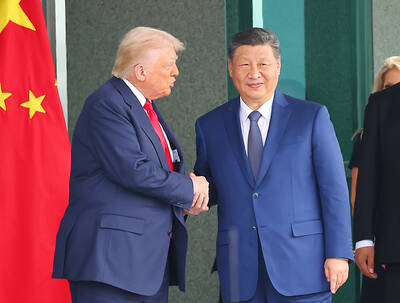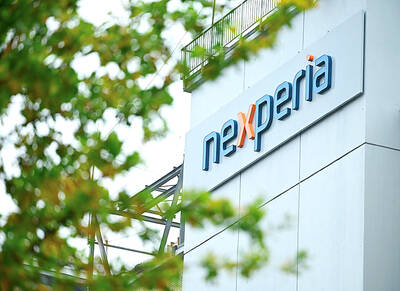SEMICONDUCTORS
Chip stash hints at slowdown
South Korea’s chip stockpiles increased by the most in more than four years, suggesting a slowdown in demand for memory chips used in electronics worldwide. The nationwide inventory jumped 53.4 percent in May from a year earlier, Statistics Korea said yesterday. An earlier 54.1 percent gain in March 2018 coincided with a slowdown in revenue growth in the chip industry. Semiconductor stockpiles have been rising on a year-on-year basis since October last year. South Korea is the world’s largest producer of memory chips, which go into everything from smartphones to laptops to cars. The mounting stockpiles come amid growing concerns over a possible global recession driven by inflationary pressure, rising interest rates, deteriorating consumer confidence and Russia’s ongoing war in Ukraine. Overall industrial production showed a recovery from April’s fall as lockdowns in China eased. Factory output rose 7.3 percent in May from a year earlier, beating a 4 percent forecast by economists.
BREWERIES
Kirin sells Myanmar stakes
Japanese drinks company Kirin Holdings plans to sell its Myanmar business to its military-linked local partner, it said yesterday, exiting the Southeast Asian country more than a year after the military toppled an elected government. Kirin is to sell its 51 percent stake in the Myanmar Brewery Ltd joint venture to partner Myanma Economic Holdings Public Co Ltd for ¥22.4 billion (US$164 million), it said in a statement. Kirin executives initially said they wanted to remain in the market to some degree, but after a year of negotiations, the two sides agreed in February to terminate the venture. Rights group Justice for Myanmar criticized the sale as a “windfall for the Myanmar military” that would ensure the junta a steady stream of revenue.
UNITED KINGDOM
Historic deficit for GDP
The current account deficit in the first quarter ballooned to £51.7 billion (US$62.6 billion) or 8.3 percent of GDP, the biggest shortfall by that measure in records going back to 1955, Office for National Statistics (ONS) data showed yesterday. The figures were subject to more uncertainty than usual due to the effects of post-Brexit data collection changes on trade in goods imports and foreign direct investment, the ONS said. Economists had expected a deficit of just under £40 billion. The ONS also said GDP in the world’s fifth-biggest economy increased by 0.8 percent in the first quarter compared with the final three months of last year, when the public had yet to feel the effects of a rise in inflation.
EUROZONE
Economic headwinds hit
French inflation climbed further from May to a record high of 6.5 percent, official preliminary figures showed yesterday, adding headwinds to the eurozone’s second-largest economy. The French National Institute of Statistics and Economic Studies said prices last month rose by 0.8 percent from May, and 12-month preliminary inflation stood at 6.5 percent. Analysts said in a poll that preliminary annualized inflation last month would reach 6.3 percent. Food and energy prices rose sharply due to the war in Ukraine, the institute said. Elsewhere within the eurozone, German inflation for last month unexpectedly eased to 8.2 percent from 8.7 percent in May, while Spanish 12-month inflation rose to 10.2 percent, marking the first time it had surpassed 10 percent since April 1985.

RUN IT BACK: A succesful first project working with hyperscalers to design chips encouraged MediaTek to start a second project, aiming to hit stride in 2028 MediaTek Inc (聯發科), the world’s biggest smartphone chip supplier, yesterday said it is engaging a second hyperscaler to help design artificial intelligence (AI) accelerators used in data centers following a similar project expected to generate revenue streams soon. The first AI accelerator project is to bring in US$1 billion revenue next year and several billion US dollars more in 2027, MediaTek chief executive officer Rick Tsai (蔡力行) told a virtual investor conference yesterday. The second AI accelerator project is expected to contribute to revenue beginning in 2028, Tsai said. MediaTek yesterday raised its revenue forecast for the global AI accelerator used

TEMPORARY TRUCE: China has made concessions to ease rare earth trade controls, among others, while Washington holds fire on a 100% tariff on all Chinese goods China is effectively suspending implementation of additional export controls on rare earth metals and terminating investigations targeting US companies in the semiconductor supply chain, the White House announced. The White House on Saturday issued a fact sheet outlining some details of the trade pact agreed to earlier in the week by US President Donald Trump and Chinese President Xi Jinping (習近平) that aimed to ease tensions between the world’s two largest economies. Under the deal, China is to issue general licenses valid for exports of rare earths, gallium, germanium, antimony and graphite “for the benefit of US end users and their suppliers

Dutch chipmaker Nexperia BV’s China unit yesterday said that it had established sufficient inventories of finished goods and works-in-progress, and that its supply chain remained secure and stable after its parent halted wafer supplies. The Dutch company suspended supplies of wafers to its Chinese assembly plant a week ago, calling it “a direct consequence of the local management’s recent failure to comply with the agreed contractual payment terms,” Reuters reported on Friday last week. Its China unit called Nexperia’s suspension “unilateral” and “extremely irresponsible,” adding that the Dutch parent’s claim about contractual payment was “misleading and highly deceptive,” according to a statement

Artificial intelligence (AI) giant Nvidia Corp’s most advanced chips would be reserved for US companies and kept out of China and other countries, US President Donald Trump said. During an interview that aired on Sunday on CBS’ 60 Minutes program and in comments to reporters aboard Air Force One, Trump said only US customers should have access to the top-end Blackwell chips offered by Nvidia, the world’s most valuable company by market capitalization. “The most advanced, we will not let anybody have them other than the United States,” he told CBS, echoing remarks made earlier to reporters as he returned to Washington